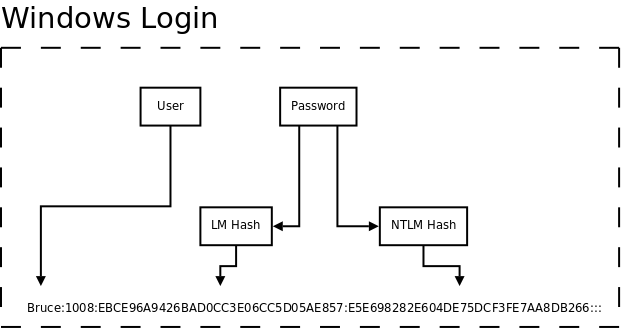Crack Lm Hash Nt Hash Decrypt
OnlineHashCrack is a powerful hash cracking and recovery online service for MD5 NTLM Wordpress Joomla SHA1 MySQL OSX WPA and more! Encrypt a word in ntlm, or decrypt your hash by comparing it with our free online ntlm database. (also known as LanMan hash or LAN Manager hash). Targets the weaknesses of LM encryption. Similar attacks and make cracking of LM hashes fast and.

Introduction Passwords tend to be our main and sometimes only line of defense against intruders. Even if attackers do not have physical access to a machine they can often access a server through the remote desktop protocol or authenticate to a service via an outward facing web application. The purpose of this article is to educate you on how Windows creates and stores password hashes, and how those hashes are cracked. After demonstrating how to crack Windows passwords I will provide some tips for ensuring you are not vulnerable to these types of attacks. How Windows Stores Passwords Windows-based computers utilize two methods for the hashing of user passwords, both having drastically different security implications. Sony Usb Flash Drive Format Tool here. These are LAN Manager (LM) and NT LAN Manager (NTLM). 907 Pc 33 Software. A hash is the result of a cryptographic function that takes an arbitrarily sized string of data, performs a mathematical encryption function on it, and returns a fixed-size string.
LM Password Hashes The LAN Manager hash was one of the first password hashing algorithms to be used by Windows operating systems, and the only version to be supported up until the advent of NTLM used in Windows 2000, XP, Vista, and 7. These newer operating systems still support the use of LM hashes for backwards compatibility purposes. However, it is disabled by default for Windows Vista and Windows 7. The LM hash of a password is computed using a six-step process: • The user's password is converted into all uppercase letters • The password has null characters added to it until it equals 14 characters • The new password is split into two 7 character halves • These values are used to create two DES encryption keys, one from each half with a parity bit added to each to create 64 bit keys.
• Each DES key is used to encrypt a preset ASCII string (#$%), resulting in two 8-byte ciphertext values • The two 8-byte ciphertext values are combined to form a 16-byte value, which is the completed LM hash In practice, the password 'PassWord123' would be converted as follows: • PASSWORD123 • PASSWORD123000 • PASSWOR and D123000 • PASSWOR1 and D1230001 • E52CAC67419A9A22 and 664345140A852F61 • E52CAC67419A9A0A852F61 Figure 1: A password transformed into an LM hash LM stored passwords have a few distinct disadvantages. The first of these is that the encryption is based on the Data Encryption Standard (DES). DES originated from a 1970s IBM project that was eventually modified by NIST, sponsored by the NSA, and released as an ANSI standard in 1981. DES was considered secure for many years but came under scrutiny in the nineties due to its small key size of only 56-bits. This came to a head in 1998 when the Electronic Frontier Foundation was able to crack DES in about 23 hours. Since this, DES has been considered insecure and has since been replaced with Triple-DES and AES.
In short, it's another encryption standard that has fallen victim to modern computing power and can be cracked in no time at all. Perhaps the biggest weakness in the LM hash is in the creation of the DES keys. In this process, a user supplied password is automatically converted to all uppercase, padded to fourteen characters (this is the max length for an LM hashed password), and split into two seven character halves. Consider that there are 95 to the power of 14 different possible passwords made up of 14 printable ASCII characters, this decreases to 95 to the power of 7 possible passwords when split into a 7 character half, and then decreases to 69 to the power of 7 possible passwords when you are only allowed uppercase ASCII characters. Essentially, this makes the use of varying character cases and increased password length nearly useless when the password is stored as an LM hash, which makes LM passwords incredibly vulnerable to brute force cracking attempts. NTLM Password Hashes NT LAN Manager (NTLM) is the Microsoft authentication protocol that was created to be the successor of LM. NTLM was accepted as the new authentication method of choice and implemented with Windows NT 4. Cuterank Pro Crack.